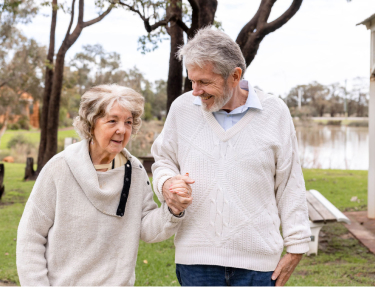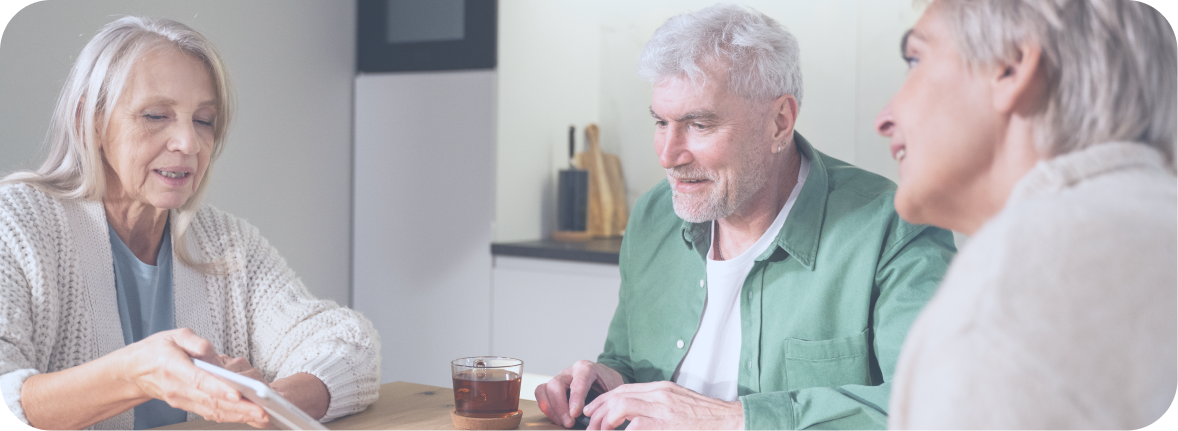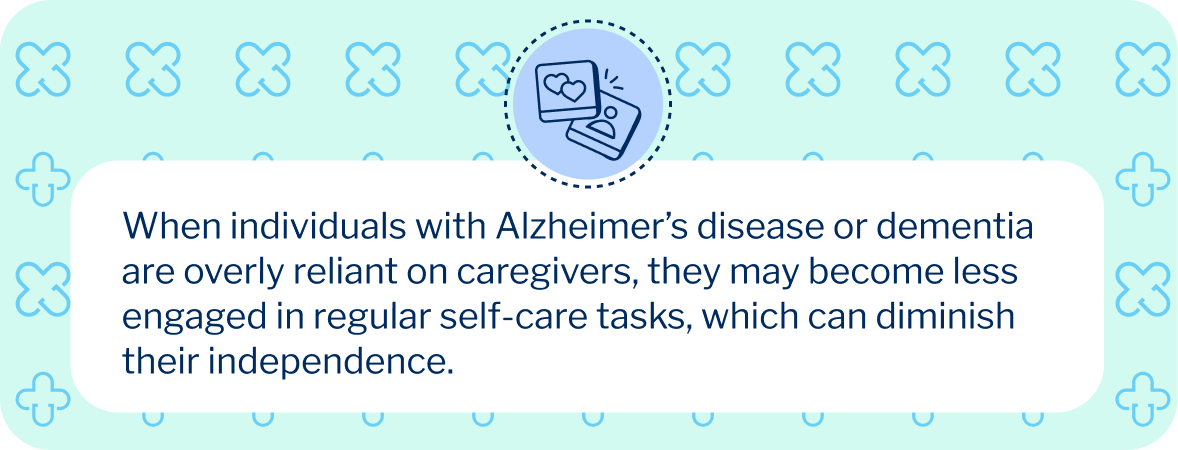What is the Best Environment for Someone with Dementia?
Knowing how to properly dementia-proof your home is critical for keeping your loved one with dementia safe. For a person with dementia, an optimal living environment is one that allows them to be as happy and independent as possible. A person with dementia needs to be familiar with their surroundings and habits. The home setting should assist someone in determining where they are and assisting them in determining where they wish to go. Confusion and disorientation can be exacerbated by changes in the surroundings.
In addition to memory, dementia can affect physical coordination and sensory perception. Falls are more likely due to reduced coordination and vision; burns are more likely because of a reduced sense of touch; and poisoning is more likely due to a reduced sense of taste and smell. Since disorientation can cause behaviours that can result in injury, it’s crucial to consider the following suggestions to make your house a dementia-friendly setting.
Prevent Wandering
People with dementia, frequently in the form of Alzheimer’s disease, lose their capacity to identify familiar locations and persons. Wandering, becoming lost, or being confused about one’s whereabouts is frequent in people with dementia, and it can happen at any stage of the disease. This is also one of the major signs of dementia you may notice in a loved one. So how do you prevent people from wandering off while also supporting independence and preventing them from feeling like they’re imprisoned?
Begin by giving the individual opportunities to participate in scheduled, meaningful activities throughout the day. Plan enjoyable activities for the times of day they are most likely to stray (usually in the evening), and bear in mind that gentle physical exercise may also help them feel less anxious. Having a daily plan will help secure some independence, and they’ll be less likely to wander if they’ve already had some active experiences during the day.
It’s also important to prepare the home to prevent unsafe wandering. For example, a fenced-in yard can provide both fresh air and security. Try following some of these basic safety measures that may apply to your home:
- Lock doors and windows, and position deadbolts in an out-of-sight position on doors
- Use nightlights throughout your home
- Install warning bells above entryways and alarm systems to detect open doors
- Build hedges or a fence around the patio, yard, or other communal spaces outside
- To block access to stairwells or the outside, use safety gates or brightly coloured netting
- Make indoor and outdoor communal places that may be explored safely
- Hide coats, hats, pocketbooks, keys, and wallets that may trigger a person’s desire to flee
- To describe the purpose of each area, label all doors with signs or symbols
- To assist prevent excessive stimulation, keep an eye on the noise levels
- Consider registering the dementia patient with a wandering response service
Reduce Home Hazards
The most important thing to do when you are dementia-proofing your home is to reduce potential hazards. Reducing hazards that can cause injuries and distress for someone with dementia is crucial, and this process can start with a thorough inspection and maintenance around your home. Many hazards can be avoided if you focus on accessibility and making sure objects are easy to see and avoid.
Adequate lighting is an essential part of the dementia-proofing process. Shadows created by spotty lighting might appear like deep gaps or edges that must be walked over or around. Some dementia sufferers may also mistake shadows for burglars or frightening animals, so it’s important to use indoor and outdoor lighting that is well-placed and bright to help avoid falls, anxiety, and dread.
In addition to safe lighting, try out these methods of reducing hazards in the home:
- Make sure kitchen appliances have automatic shut-offs and use knob covers to prevent people from leaving appliances on
- Test carbon monoxide detectors and smoke detectors regularly
- Remove or lock guns and knives
- Lower the temperature of the home water heater to avoid burns
- Remove locks on indoor doors so they don’t lock themselves in a room
- Use neon, glow-in-the-dark tape to mark the boundaries of the steps
- Repair any cracks in the pavement as well as any uneven bricks; unless they are level with the ground, stepping stones constitute a tripping hazard.
- Clear walkways and remove any objects or dangers that can cause slips and falls
Prevent Falls
Dementia increases the risk of falling. A crowded route is like being inundated with too much information for people with dementia, who are unable to weed out the irrelevant sensory input. This means that to prevent falls you need to focus on clearing walkways and relocate items so that they won’t get in the way.
Remove clutter and trip hazards such as wires and rugs on floors and leaves and snow outside. Use good lighting, especially in hallways and on stairs. Add railings in bathrooms and showers, on stairs, and outside. Use high-contrast colors to make important things easier to see, such as the toilet seat. Secure furniture to walls and store important items on visible shelves that the person can easily reach so that they don’t try to climb. Learn more about preventing falls.
Prevent Poisoning
People with dementia are at a higher risk of eating hazardous chemicals, particularly popular cleaning products that smell similar to food (such as pine oil or lemon soaps).
Limit access to locations where cleaning fluids and medication are stored by using safety measures such as childproof locks and doorknobs. You should also keep medications and vitamins locked or in an automated medication administration dispenser. Get rid of toxic plants or decorations that could be mistaken for food, and regularly clean out the fridge and pantry of any spoiled food.
Encourage Independence
In order to foster self-worth in dementia patients, it is critical to promote their independence. When individuals with Alzheimer’s disease or dementia are overly reliant on caregivers, they may become less engaged in regular self-care tasks, which can diminish their independence. It’s easy to fall into the trap of always doing tasks for a person with dementia, but it’s valuable and healthy for them to continue to do as much as possible on their own.
Dependence is less likely to become discouraging for the dementia sufferer if self-care is encouraged when appropriate. When caregivers enable individuals with dementia to do minor things on their own, they provide vital assistance. Furthermore, dividing big chores into smaller, more manageable ones gives the senior a sense of freedom. Encourage people to be more self-reliant by discovering resources and following these tips:
- Use labels on faucets (hot/cold), cabinets (glasses/plates), and room doors (bedroom/bathroom/kitchen) to help people find and use needed items
- Display a large print, easy-to-read clock with the time and date on it to help orient them to the time and place
- Use contrasting colors to make important items easier to see
- Put frequently-used items in visible places so they don’t need to search for them
- Reduce busy patterns, mirrors, etc. that can cause visual confusion
- Make extra copies of keys, glasses, etc. in case one is lost
- Label the places where things go (hook for keys)
- Write step-by-step instructions (with visual clues like pictures if necessary) for how to do daily tasks and display them where they’ll need to do that task
Determine whether there are any potentially unsafe locations near your house, such as bodies of water, open stairwells, dense foliage, tunnels, bus stations, or busy roadways. Request that neighbors and anybody who sees the individual roaming, disoriented, or dressed improperly phone 000.
Support Memories
While someone is navigating dementia, it’s extremely helpful to offer emotional support by supporting their memories. Memories may be captured and preserved in a variety of ways for a family member with Alzheimer’s disease or other types of dementia. It may include playing a favorite 1940s big band song, arranging photographs on the coffee table, making a list of questions to ask, or just sitting down in the living room to reminisce.
To support memories you can display pictures of loved ones (with labels if needed) and display familiar objects and keepsakes. Encourage people to keep a journal of daily activities and events that they can read, and you can even make a memory book together of important people and activities. It’s also important to listen to their stories and don’t argue if they’re confused.
When to Seek Extra Help Caring For Your Loved One
You may find yourself overwhelmed with the responsibilities of caring for someone with dementia in your home. When you notice that you have caregiver burnout, it’s important and valuable to seek out extra help to assist in caring for your loved one. This can also alleviate your own stress and help you monitor both of your wellbeing. Whether your loved one is eligible for aged care funding or you are ready to hire caregivers out of pocket, we offer affordable high-quality home care services. We look after individuals who require assistance so that they may remain independent and dignified in the environment that is best for their health: their own home.
If you’d like to learn more, you can also check out our free Dementia Home Care Guide.
Dementia Care Guide










